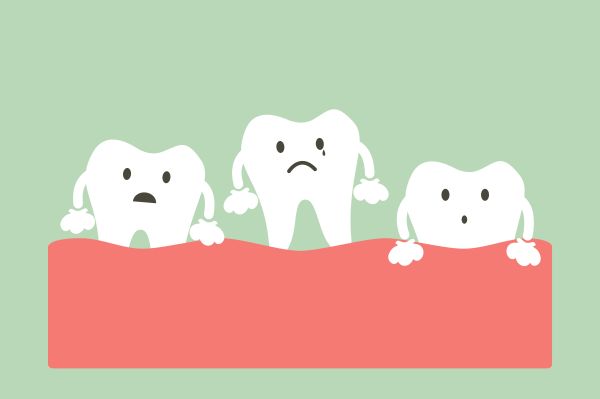Should I Consider Gum Grafting?

Gum grafting is a surgical procedure performed to correct the effects of gum recession. It is also used in cosmetic dentistry to improve the appearance of the gums. The procedure is quick and relatively simple and it involves the surgeon removing healthy gum tissue from the roof of the mouth to rebuild the gums where they have receded.
Why should I consider gum grafting?
Gum recession occurs when the tissue that surrounds the teeth pulls away from a tooth and exposes the tooth's root, which can cause damage to the supporting bone. Most people do not notice that their gums have receded because it is a slow process.
Over time, the recession becomes worse and can lead to the tooth root being exposed, which can cause sensitivity in the tooth. If the problem is not treated promptly, it can lead to tooth loss. Fortunately, the problem can be fixed and further dental problems can be avoided thanks to gum grafting.
What happens during the gum grafting procedure?
There are three different types of gum grafting performed by dentists. The type used on a patient depends on their condition. The different gum grafting techniques are:
Connective-tissue grafts
This is the most common gum grafting procedure. During the procedure, the dentist will cut a flap of skin from the roof of the patient’s mouth, and the tissue from the flap, called the subepithelial connective tissue, is removed before being stitched to the gum tissue surrounding the exposed root. After the tissue has been removed from under the flap, the flap is then stitched back.
Free gingival grafts
Free gingival grafts also use tissue from the roof of the mouth for gum grafting. However, instead of making a flap and removing the tissue, a small amount of tissue is removed directly from the roof of the mouth and it is attached to the gum area that is being treated. It is commonly used on people who have thin gums.
Pedicle grafts
Instead of taking tissue from the roof of the mouth, the tissue used to perform the gum draft is grafted from gum around or near the tooth needing repair. The flap is partially cut away so that one edge remains attached. The gum is then pulled over or below to cover the exposed root before being sewn into place. The procedure is only used on people who have plenty of gum tissue around the tooth.
What happens after the procedure?
The patient will be allowed to go home after the procedure, but they will need to have someone drive them home because they will be sedated during the procedure.
There will be some swelling and pain after the procedure but the dentist will prescribe painkillers and advise their patient to put an icepack to reduce the swelling. The patient will also be given antibiotics to prevent infection.
Conclusion
Gum grafting is used to treat gum recession by using tissue from the mouth to cover up exposed roots. If your gums are receding and you want to fix the problem, talk to a dentist about undergoing gum grafting surgery.
Request an appointment here: https://www.mysaratogadentist.com or call My Saratoga Dentist PLLC at (518) 675-3094 for an appointment in our Saratoga Springs office.
Check out what others are saying about our services on Yelp: Read our Yelp reviews.
Recent Posts
Regular visits to a dental practice provide essential care for achieving and maintaining optimal oral health throughout a patient’s lifetime. Beyond treating immediate dental concerns, a dental practice emphasizes preventive care, patient education, and tailored treatments designed to safeguard oral health for years to come. Understanding the role of professional dental care underscores the importance…
Regular dental checkups are the key to good oral health, as they prevent potential dental problems before they become more serious. Visiting a dental practice not only helps maintain the health of the teeth and gums but also contributes to overall well-being. Knowing what to expect before visiting a dental practice for a routine checkup…
A dental bridge is a restorative treatment that fills the gap left by a missing tooth. These restorations feel similar to natural teeth and prevent additional oral health issues from arising due to gaps in the smile. Qualifying for dental bridges is also easy. Most patients find they qualify, and if they do not, they…
A dental practice can help when a toothache starts. Tooth pain can come on slowly or all at once, often worsening if left untreated. Even if the pain feels small, it may be a sign of a bigger problem. Getting help early can stop the pain and protect the tooth from more damage.A dental practice…


